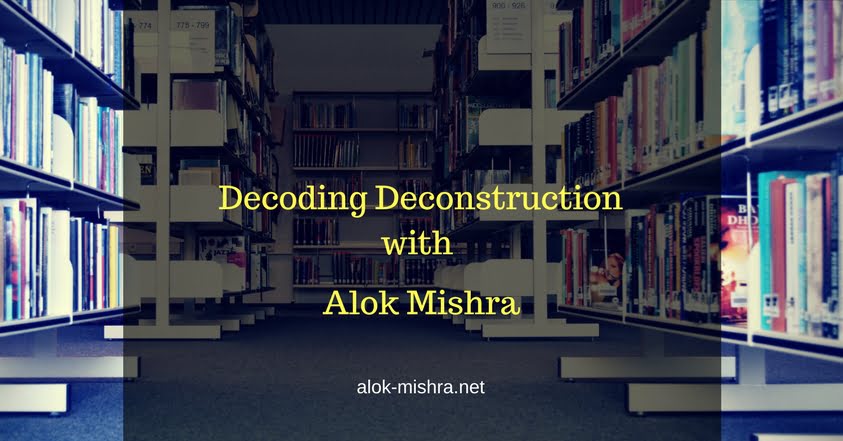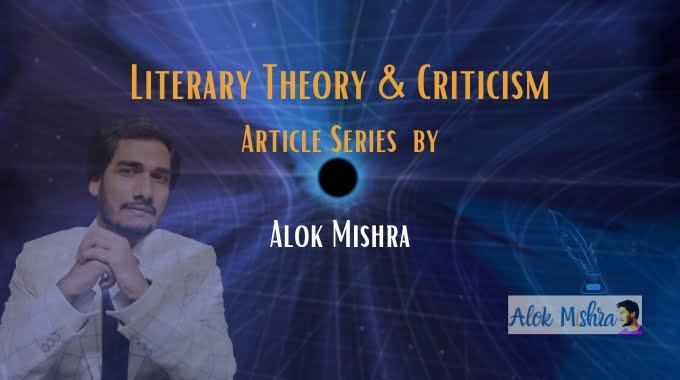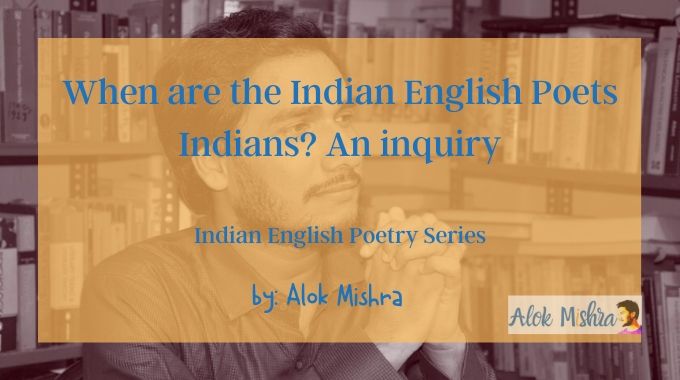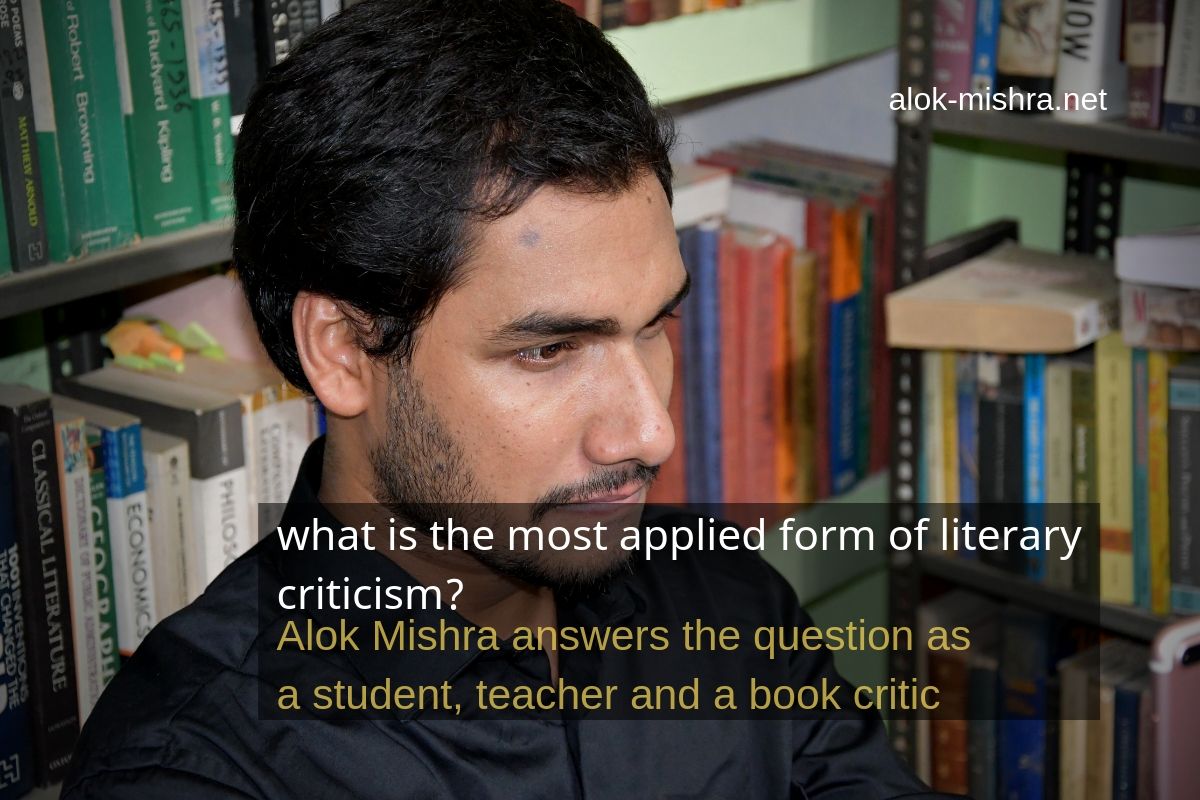My dear friends, I hope you are all doing well in this challenging situation. The…
Deconstruction – meaning & theory in literature with examples
For the past few days (which formed many months), I have been constantly trying to write an article about Deconstruction (only within the ambit of literary theory) for many students who have requested me to do so. However, Deconstruction is not so easy to construct! To write something about this is a highly risky job and before doing it, I wanted to be completely sure of myself and my research and my offerings. Do you see? Derrida hasn’t left the playground of Deconstruction in any comfortable condition and the ‘free play,’ I must say, is highly restricted.

Well, let’s get to the business of words. I have studied and studied again and again and again many books on literary theory in order to understand Deconstruction. I did the best I could do with the available resources. And you have to believe me when I say that most of the books will put you in a further fix with the topic – Deconstruction hasn’t been easy to understand and neither to make someone understand. Other than the perplexing “Structure, Sign and Play” and the scholarly commentary on the essay, students (and sometimes the teachers as well) need something which can simplify the concept of Deconstruction in the literary context to them. My attempt, I have tried my best, is an attempt in the very direction.
What is Deconstruction?
Though Patricia, in her book Literary Theory & Criticism, has refrained from defining the term “Deconstruction,” it can certainly be defined within the limits of being a literary theory. On the basis of whatever I have studied, Deconstruction (as a literary theory) can be defined in the following words:
Deconstruction is an apparent revolution against all the literary theories before itself which vouch for unity in the literary texts. It seeks to find the differences, contradictions, paradoxes, ambiguity and disintegration (in short, loopholes) in the text. Deconstruction basically aims at proving that a literary text is not certainly unified and it has a multitude of meanings if we try to find the same. Therefore, sometimes, it is also called textual harassment.
After defining Deconstruction theory in literature in the simplest and most lucid manner, we need to understand what does a deconstructive reading mean. The questions like what really does a Deconstructionist do and how will you deconstruct a particular text also need to be addressed for a proper understanding of Deconstruction. So, we move ahead now.
What does a Deconstructionist do?
In general, we read literary texts in order to establish unity and bring out a meaning based on our entire reading. The Deconstructionist, however, reads the text just to find the fault lines. Mostly read in fragments, a Deconstructionist’s reading of any literary text is aimed at the following:
To prove that the text does not have any singular meaning and it can be read and understood in various ways
To find out the disassociation of ideas and discontinuity of style to prove that the text is not a single unit and is rather made of different units of different kinds
To look for various kinds of breaks in the text to find out the possible repressed interpretations which could be brought out of the ‘textual silence’
Going a little deeper into Deconstruction Realm:
Peter Barry has hinted at the three levels which might be highlighted to further simplify the process of a Deconstructive reading. He identifies the three levels as:
Verbal
Textual
Linguistic
The elementary level, Verbal, is purely elementary in nature. A reader with the Deconstructive view looks at the text leisurely to find out the obvious contradictions or paradoxes or confusions. A Deconstructive reader would take the poem’s basic idea and question it. For example, if you suppose the poem Paradise Lost by John Milton to be suggesting that God does everything right and that He is just and upholds truth and righteousness, why did he create Satan anyway? And the idea of the whole poem falls flat when we think of the poem this way.
On the Textual level, Barry suggests that a close reading of the text is carried with minute details to find the instances of shifts or breaks in the narrative or the continuity of the text. These shifts are of various kinds – time, point of view, idea, word choices, or even the technical shift such as grammatical choices – change from the third person to first person (speaker) or the change in tense.
For example, if you read the part-poem, Before the World Was Made (A Woman Young and Old, published in The Winding Stair and Other Poems, 1933), you will find a clear break in the poem. It begins with someone decorating herself and then, after a certain time, suddenly trying to look at the face that was even before the world was made!
“I’m looking for the face I had
Before the world was made.”
And then the speaker thinks of looking at some man in a cold manner which might make that man feel like betrayed… and then suddenly the speaker remembers to hunt for the face which was there before the world was made. So, a break is found and there is no singular idea which is being carried in the poem by Yeats. (I Know it’s extradition of his poem. Believe me, I just don’t like the idea of Deconstruction!)
And the third one that Peter suggests is the Linguistic level. It concerns with finding the instances where the author or the poet is unsure about the powers of the medium he or she is using – that is language. For example, the instances when a poet says that no words can describe the beauty of his beloved but actually describes her beauty in the same poem.
Larger Perspective – the theory summed up:
Deconstruction, as a literary theory, purely aims at proving that the author or the poet of a particular text on which the theory is being applied is either mad or does not know how to craft a literary art perfectly (does even the best of the Deconstructionists know what is a perfect literary work?). Reading against the grain, finding the loopholes, looking for silly grammatical glitches and proving that there is something as unconscious meaning in the text are some of the major jobs of the theorists who have been at the Deconstruction school. The basic idea of Deconstruction is that nothing is stable. That there is no single meaning and meanings are changing constantly is the basic argument. Deconstruction aims at challenging the established notions and it believes that there is no centre (philosophically speaking). However, their philosophy is adamant believing that they don’t believe in any established facts!
The concerned father figure and other literary figures associated with Deconstruction:
Jacques Derrida (1930-2004) is generally considered the man behind this theory. His essay entitled Structure, Sign, and Play in the Discourse of the Human Sciences is the origin that started the debate which formed itself into a theory later known widely as Deconstruction. Derrida’s was a lecture that he delivered at John Hopkins University in 1966 (21 October). Major works by Derrida in this direction are: Of Grammatology, Speech and Phenomena, and Writing Difference.
Roland Barthes: Roland Barthes provided the wind with his essay in 1968, The Death of the Author. He had enjoyed his stays in both the schools – Structuralist as well as Post-Structuralist.
Paul de Man: He can surely be called the American heir to the Deconstructive wealth of Derrida! He went a few steps ahead of Derrida and told his readers that all other theorists in literature are blinded in their search for insight. His works Blindness and Insight, 1971 and The Allegories of Reading, 1979 are considered valuable assets of the Deconstruction school of literary theory.
Barbara Johnson: Her book The Critical Difference was published in 1980 and it contains some of her deconstructive readings by her.
Concluding Remarks:
Though the academic need compels us to study these self-contradicting theories, believe me, there is no greater mess than this! Deconstruction, of all the theories, is the most difficult one to understand as well as bring into the application. We are conditioned in a way that we naturally look for unity in texts and our mind automatically accepts what could be the best possible interpretation. Deconstruction teaches us entirely opposite of what we have been doing and that’s why it becomes a little difficult for us at the beginning. Unfortunately, the beginning becomes the end!
As a theory in the literary context, Deconstruction faded into oblivion rather sooner because of its ambiguity and perplexing beliefs. It had to be so because there is nothing like the subconscious interpretation of the text when a writer is conscious while writing his or her work. It is merely superficial to think of Oak as doubting Bathsheba and thinking ill of her all the while when he was not present in the text himself!
Final Words:
Dear readers, so, I am done! I have tried my best to make it simple for the students to understand the nature of Deconstruction as a literary theory. I will be more than happy to take suggestions or questions and take the discussion ahead. All the best!




Thank you so much @Alock Mishra for your response. The deconstruction literary theory is now clear to me.
Deconstruction is a complex concept that is used in various fields, including literature. This blog does an excellent job of explaining the meaning and theory of deconstruction with relevant examples.
Hello sir,I wish to quote you in my exams tomorrow,and I have tried searching for your bio online I didn’t get.
Thanks a lot for your sincere efforts. It will be a great help in my teaching.
Thank You… Thank You… Thank You… Out of all the pages on the web, your explanation went straight through my head. Thank You so much for explaining in such easy words.
Thank you for your comment, Subha! I wish you the best with your studies. Achieve; share; succeed!
What happens if we deconstruct the deconstruction of say a scientific paper?
Most probably, we will find loopholes in the process of deconstruction. That is what happens when we go against the flow and the apparent and dive deeper into the subconscious that was not ‘intended’. For literary fun, it is an adventure though. 🙂
THanks for taking the time and reading this article, Carlo!
Thanks for sharing the kind information with me
Thanks for this short and easy to understand explanation. Now it’s clear to me why Deconstruction itself, has no definite meaning.
This is the clearest explanation of the theory since I started reading about it Two days ago.
Kudos.
Quite a good explanation you gave here. Deconstruction frees us from the imprisonment of seeing things in a formulaic manner. Through it we have a chance to fly (think) freely like a bird.
I can also add that deconstruction is not equal to destruction. It is writing of another perfect text by feeling the loopholes in the original text: reading against the grain. This means that the deconstruction process doesn’t stop. A text that is written for purposes of deconstructing another, can also be deconstructed by another…a continuous process and that is why deconstruction is revealed in the process and not the product.
I believe that deconstruction becomes an enemy to anybody/anything that tries to say how something really is, including this.
Thank you.
What a paradox! I love it.
So whats the point in all of it?
Keenly interested in literature and theory
When I studied literature many years ago I came to think of deconstruction as a viepoint for looking at the world. In simplistic terms it could be called pessimism. However I found Roland Barthes a revelation, perhaps because I had often been called a pessimist . Socially a pessimist is seen as someone always seeking the worst interpretation of life, finding the fault, pulling apart the rainbows that others construct. Deconstructionism for me, validated and gave approval to my instict to find the inconsistancy in life rather than be seduced by the charm of the harmonics of the perfect pattern the pleasure of unity. Yes, I understand beauty and the euphoria of perfection. But I also see in this world that we must deconstruct not just the text but the very reality we live if we are to see through the manipulations of advertising, politics , religion, any ideology the was is or might come into being. There are those in this world that try to construct dreams, paradise after death, perfect nations, success measured by material objects, musicians worshipped like gods. Then there are those who must see through the dream to the realty, give voice to the silences. In short make the ugly and inconsistent evident. Does art reflect reality or reality reflect art? Of course both occurs art is reality and studying art should teach us about life. The danger of deconstruction is destruction. Ultimately as human beings we must have structure . It is a revelation when we first realise that reality is all just put together in our own head. A construction, analagous to a novel just a story the mind has put together in first person. I don,t believe deconstruction theory is meant to destroy all other theories but to show us that all thinking including language is a construct suseptible to change and requiring accountability from those who would construct. Deconstruction is perhaps a game changer. Instead of looking for universal truths it simply says there are none. Everything is a construct and its reality rests totally on its credibility. Deconstruction is just a tool for testing that credibility. My encounter with deconstruction theory in my literature studies was enlightening and changed my world view.. It paradoxically presents itself as a way of viewing reality whilst undermining the very heart of reality, truth.. It replaces truth with belief. The difference being that truths have always been viewed as self evident while belief is up for scrutiny.Knowing that my universe, my reality is less solid than I previously believed is not frightening but freeing. Not such a pessimistic viewpoint afterall.
Hey Rhonda, thanks for sharing your opinion with all the readers here! Yes, within your ‘construct’ you are right (and you have all the right) to feel free by a theory called deconstruction. While many others are frightened and disturbed to know that they have been believing for so long is a mistake or just misconception, you are looking at a different perspective. Your thoughts almost compel me to remember the Hindu texts which tell the world about Mukti or Moksha – one has to understand that everything that we on this planet is just momentary and ephemeral and human soul is all the reality that we should believe in. That’s why the Sadhus (Sages) in India are ‘free’ from the burdens of social compulsions – they believe in ‘nothingness’ of this world.
Very enlightening view and I certainly admire your interest in the theory! I am sure the readers in future will take interest in your thoughts on Deconstructionism and get an alternate opinion to discuss and learn. Thanks again!
Rhonda – you have explained this concept beautifully. I have been looking at fashion designers such as Martin Margiela who reduce a garment to its very construction and your explanation on seeing ‘the very reality we live’ is apt.
Alok – this is a great thread. Thank you.
I am glad to see more people joining in, Bartlett! I hope you enjoyed the flow of thoughts – it’s all but freeing things from being ‘things’. 🙂
Thanks!
This is just the best.
Thank you very much for simplifying this theory.
Alicia, many thanks for your views on this Deconstruction article! All the best!
thanks for posting this article and it helped me a lot.I have a doubt .Deconstruction is similar to post structuralism? or there is any difference between them?
Hi Srivaani, thanks for the upvote! It pleases me knowing that my article could be your help. And your question is just about a small confusion. In fact, Post Structuralism is everything that occurred after the theory of Structuralism. And because the majority of attention was taken by Deconstruction, it is generally confused with Post Structuralism. Thanks!
Thank you very much ! I have a report tomorrow about Deconstruction it helps me a lot.
Hey Julie, all the best! I hope you had a good day submitting or reading out your report!
Thank you so much for this. Twas helpful
Thanks alot.
It is quite helpful for me to prepare for my m.phil exam .
Thank You Sir…I am very new to english literature,but your explanations only taught me very clear.I am trying to clear NET exam for getting the professor job sir, but my undergraduation was BCA ,Post graduation M.A.English.I couldnt clear NET paper for past three year.I am struggling sir…Thank You for the explanations Sir…
Thank you Sir, it was of emmense help.
My pleasure, Dominica! All the best for your studies!
Hi sir, Good Job..Thanks much for your crisp explanation about this theory:)
Thanks, Lemmima! I am happy it helped you. 🙂
After searching a lot for it I found it properly explained in your article thanks sir
All the best for your literary theory studies, Rajni! I am happy it could help you!
Well done sir thanks
Thank you very much for such an illuminting intervention, but at this of my academic career I need to be able to apply deconstruction. How can I do that effectively?
Hi Najib,
sorry for a delayed response. Nevertheless, you can just apply it to any text you would like. Just try reading the text with a ‘destructive’ mindset and look for the ‘loopholes’. Look for the time-gaps, tense-mistakes, gender issues, subconscious indefinite and so on… you will be able to find what you are looking for.
spectacular explanation of deconstruction sir
Thanks, Farheen! All the best with your literary theory studies!
brevity is the soul of wit…
you proved it..
thanks a lot sir..
no website could satisfy me .the way you did respected sir…thanks a lot
Thanks, dear Priya! Thanks for both your remarks and I am happy that my article could help you with deconstruction theory. All the best!
Good Evening Sir, Very well explained thank u. Kindly write the article for the CBSE NET July 2018 Exam only for paper 2
Hi Jyotsana, I will surely write something very soon.
Thanks